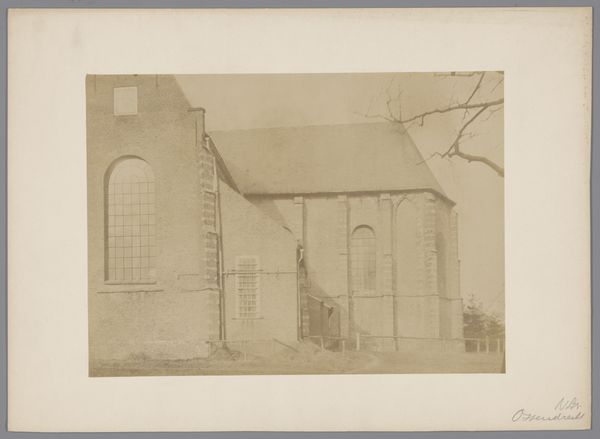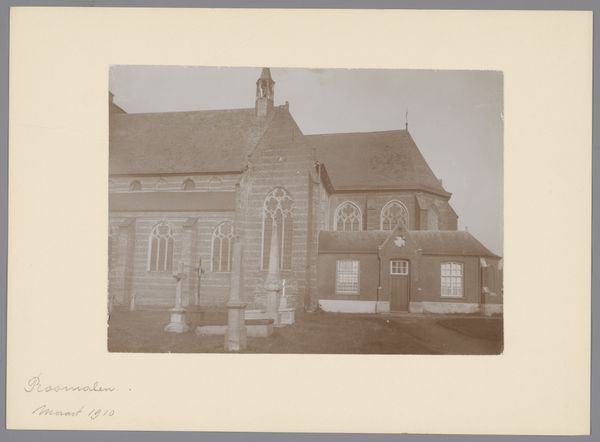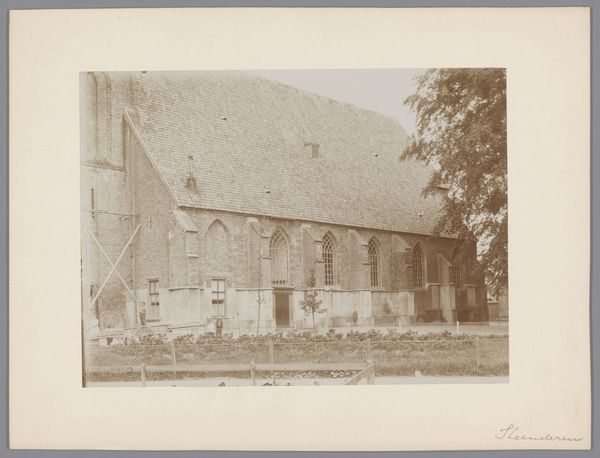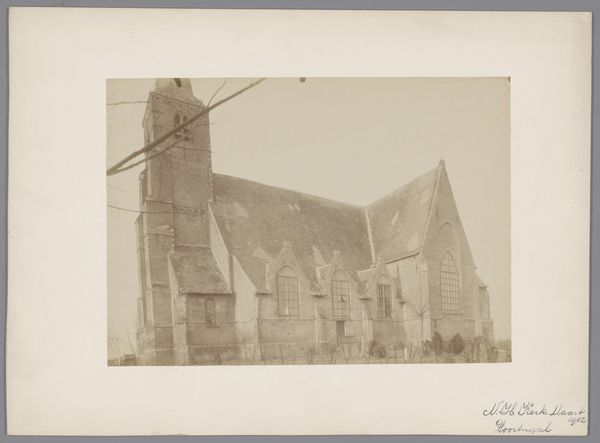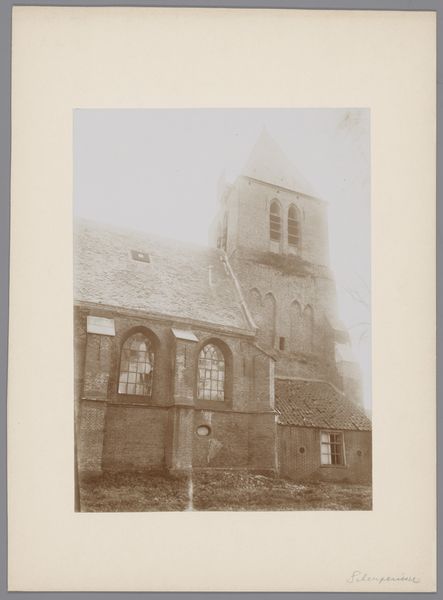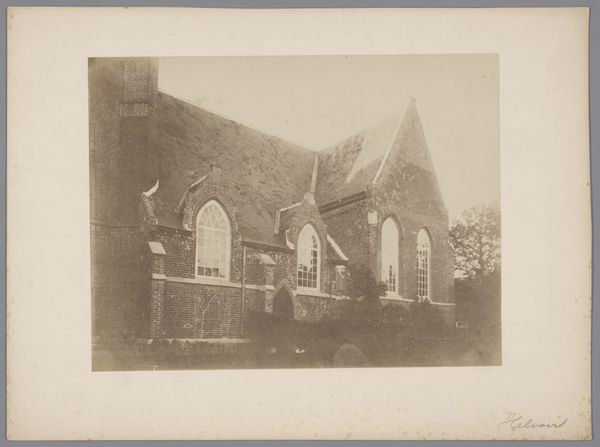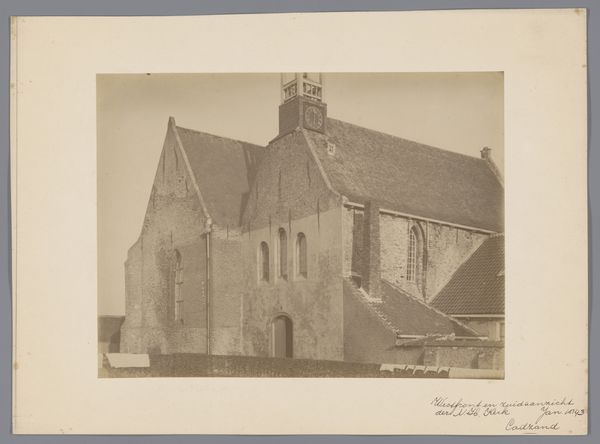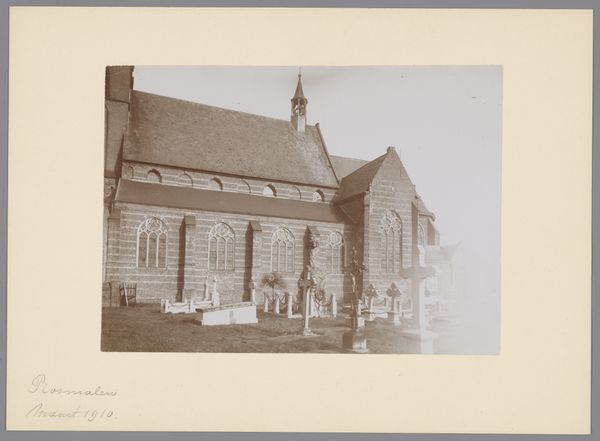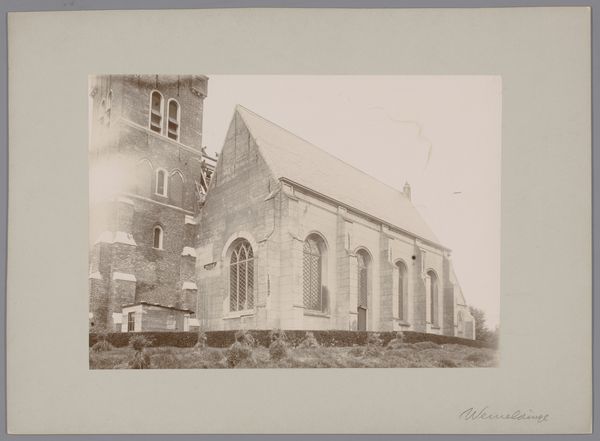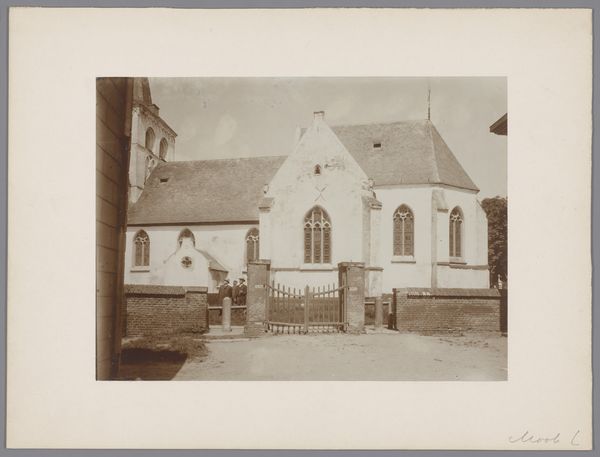
Dimensions: height 165 mm, width 227 mm
Copyright: Rijks Museum: Open Domain
Editor: This is an anonymous photograph from 1898 entitled "Noordoostzijde van de Hervormde Kerk te Waspik". It looks like a study of a church. The muted tones and close-up perspective emphasize its architectural details. What jumps out to you? Curator: I'm immediately drawn to the materiality. Look at the textures in the brickwork. The wear and repairs show an active engagement with this structure, reflecting the labor involved in its construction and ongoing maintenance. Think of the social implications here: materials sourced, hands that laid each brick, and funds acquired for preservation. Editor: It does look well-worn! I guess I hadn't considered the 'hands' involved. Is it fair to say the photo highlights social layers? Curator: Exactly! The church is not just a place of worship; it's a nexus of communal activity, shaped by material concerns. Consider also the uneven tones and imperfections of early photography—the photograph as a crafted artifact further extends a discussion of materiality beyond the depicted brick-and-mortar structure. What do you see that you might now consider "material" aspects, even if intangible? Editor: The light! The light revealing imperfections and signs of aging, almost becoming another tangible element... something to do with how we consume or experience such "historic" architecture today. Curator: Precisely! The consumption of heritage itself has a material cost, often tied to tourism and economic shifts. It changes the building’s value. What are your thoughts on its location and how that context contributes to its materiality? Editor: It's interesting, being "anonymous" as well as depicting an old church that's "well-worn", but with active social history we are free to imagine who, how and where it can fit in today's architecture. Curator: And those imaginative constructions themselves become materials we must now also critically analyze.
Comments
No comments
Be the first to comment and join the conversation on the ultimate creative platform.
